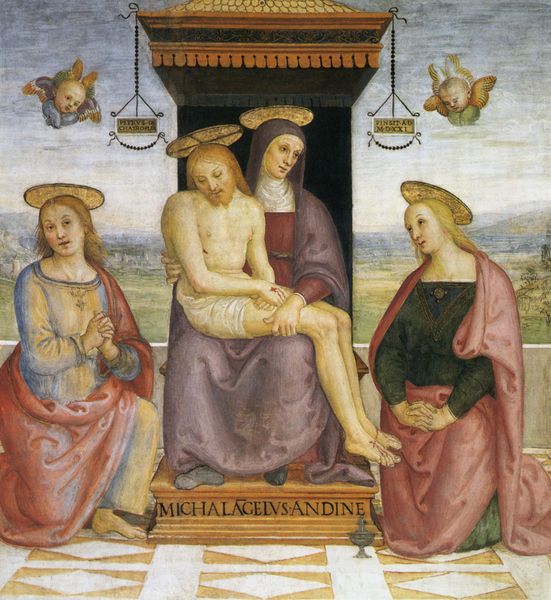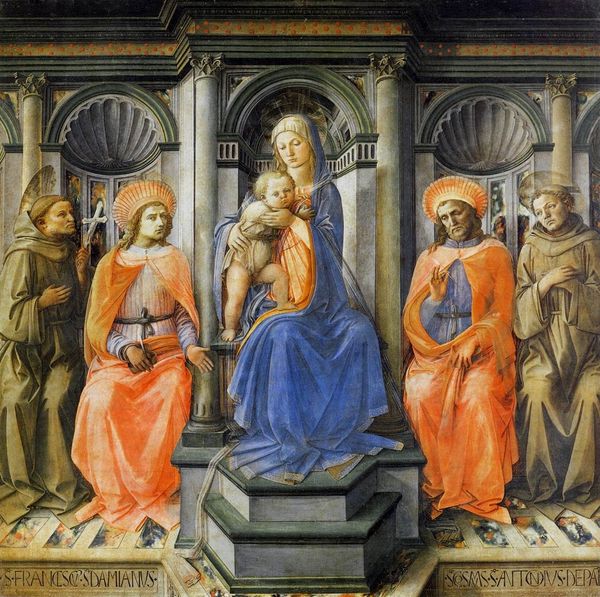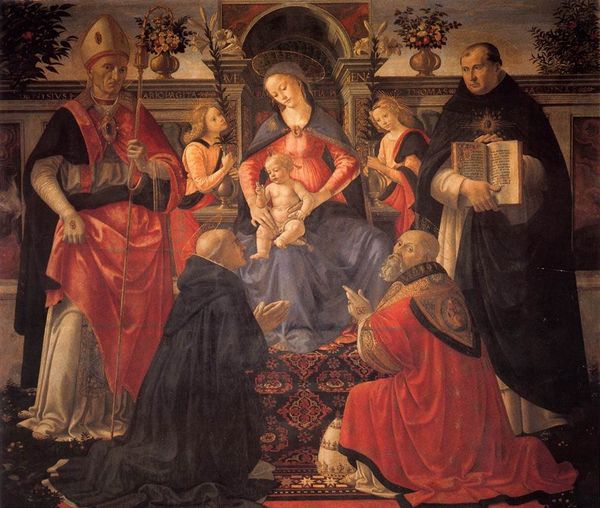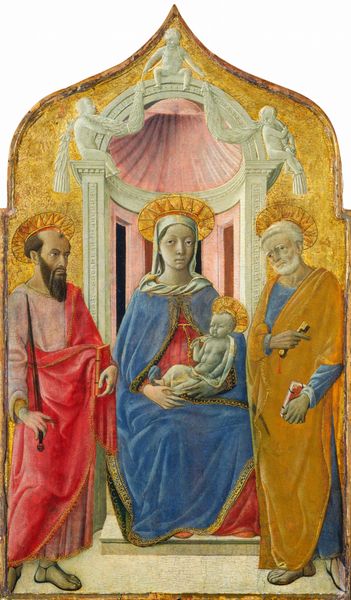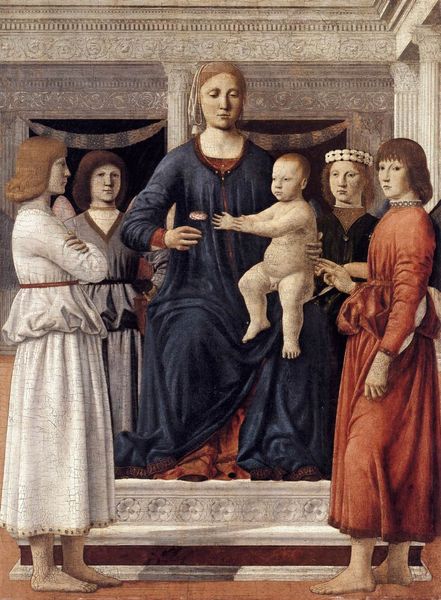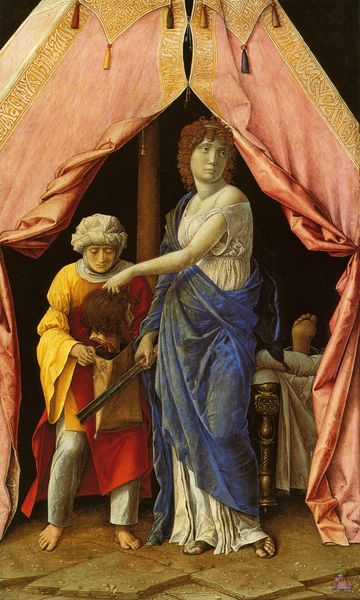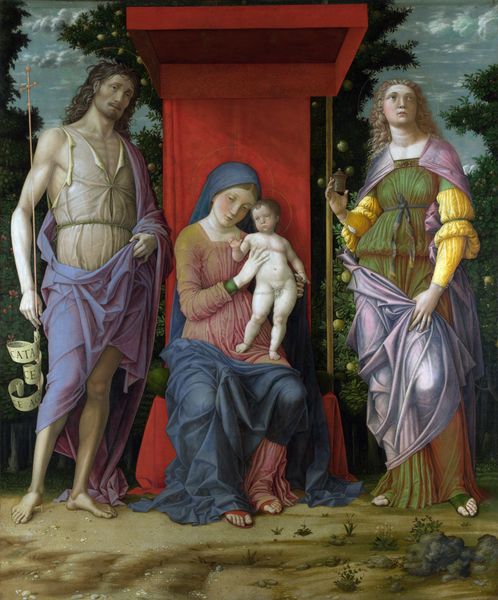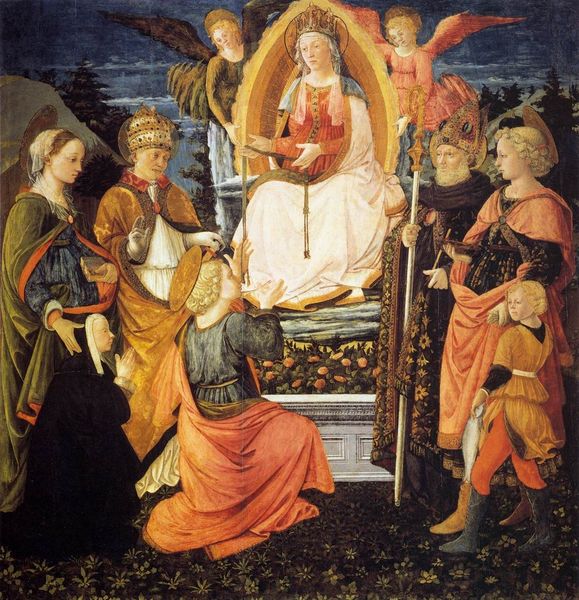
painting, oil-paint
#
portrait
#
high-renaissance
#
narrative-art
#
painting
#
oil-paint
#
figuration
#
oil painting
#
christianity
#
italian-renaissance
#
virgin-mary
Copyright: Public domain
Editor: This is "Virgin Enthroned with Saints Catherine of Alexandria and Biagio" by Pietro Perugino, an oil painting from 1521. It strikes me as very serene and balanced. What elements stand out to you most when you look at it? Curator: I am drawn to the formal construction of this work, its very calculated symmetry. Consider how Perugino deploys color; notice the mirroring of red hues on the outer figures, anchoring the composition. The pyramidal arrangement, with the Virgin at its apex, reinforces this stability. Do you observe how the lines of sight direct our gaze? Editor: Yes, it’s like everything is carefully placed, and the gazes of the figures subtly point inward, towards the Madonna and Child. The colours, while vibrant, also feel quite muted and soft, contributing to that serene quality I mentioned earlier. Curator: Precisely. Note also how the texture functions here, that use of light to model form, achieving a softness that characterizes the High Renaissance aesthetic. And reflect on how the geometry controls the viewers experience of the work. The implied architecture does not simply support but structures the viewing. What affective impact do these structures evoke within you? Editor: The architectural frame almost gives it a sense of theatrical presentation – like the figures are on a stage. It also contributes to the feeling of the painting being well-structured. I am also now struck by how carefully Perugino controls everything down to each individual color tone. I hadn't paid enough attention at first. Curator: Indeed. Paying close attention to its form enhances the understanding. Every element is purposefully constructed and interwoven to compose an effective viewing experience. Editor: Thank you. That gives me a lot to consider about how to understand Renaissance paintings from here on.
Comments
No comments
Be the first to comment and join the conversation on the ultimate creative platform.
